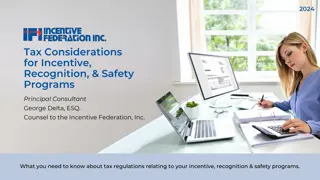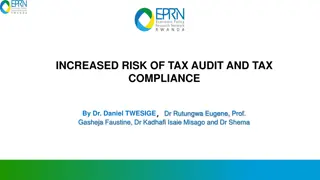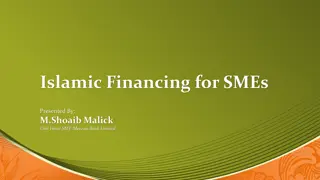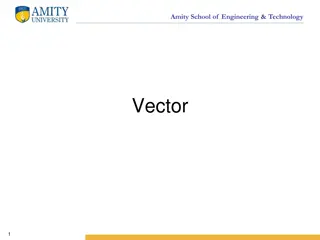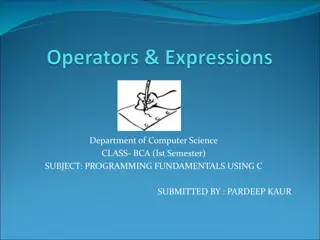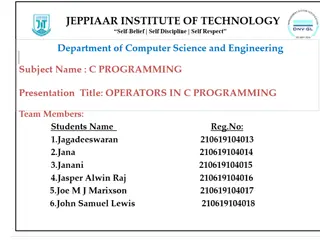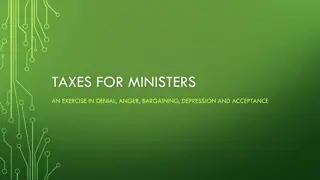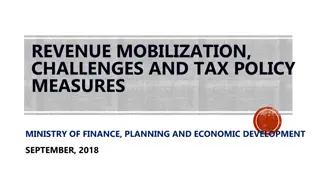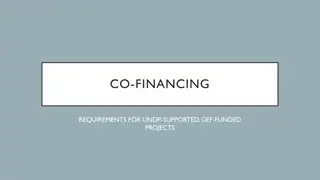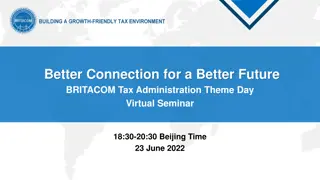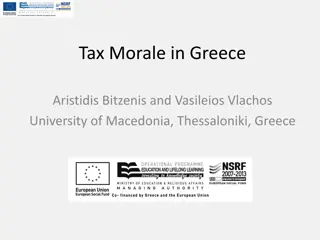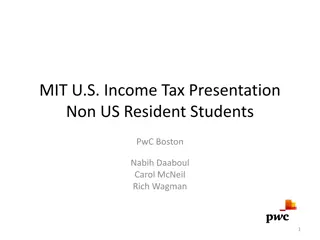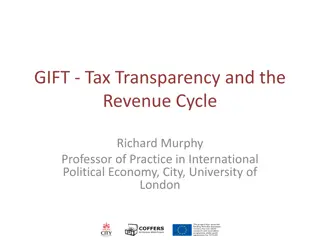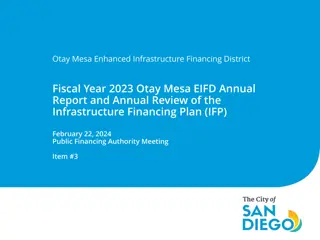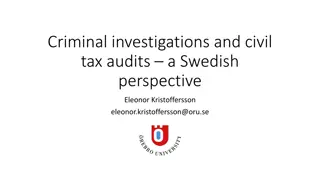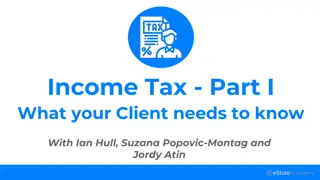Understanding Tax Increment Financing (TIF) for Economic Development
Tax Increment Financing (TIF) is a powerful economic development tool that supports urban renewal by capturing future increases in property value to fund projects within designated areas. This article covers the basics of TIF, the process to adopt a TIF plan, when a TIF district ends, accessing TIF for a project, a TIF example, and who benefits from TIF revenue.
Download Presentation

Please find below an Image/Link to download the presentation.
The content on the website is provided AS IS for your information and personal use only. It may not be sold, licensed, or shared on other websites without obtaining consent from the author. Download presentation by click this link. If you encounter any issues during the download, it is possible that the publisher has removed the file from their server.
E N D
Presentation Transcript
WHAT IS TIF? TIF = Tax Increment Financing A flexible economic development tool (one of few) Urban renewal is a program of land redevelopment in a jurisdiction TIF can only be used in an urban renewal area under an approved plan TIF can only be used for the activities or items described in the urban renewal plan Urban renewal area s property tax base is frozen. All future property value increases go into a special fund that can only spent within that urban renewal area Idea is that the improvements will generate new tax revenue and leave the jurisdiction better off than where it started
PROCESS TO ADOPT UR PLAN/TIF Determination of purpose by jurisdiction Draft plan, maps, legal description, and financial projections Board/Council Meeting Set Public Hearing Meeting of taxing entities (school district, county, city, community colleges, etc.) Board/Council Meeting Hold Public Hearing/Approve Plan Implement Plan over duration of timing of project(s)
WHEN DOES A TIF DISTRICT END? If the TIF district is: Slum/blight: Unlimited Economic Development for Housing: 10 Years Economic Development for Non- Housing: Up to 20 years When a TIF district ends, the full tax base including the increment, becomes available to all taxing bodies for their use
ACCESS TIF FOR A PROJECT? Project has to be located within an urban renewal area. Project is real estate-based with an increase in taxable valuation. In addition, jurisdiction may determine other policy reasoning like job creation and/or extraordinary development costs. Best practice is that the project would show why TIF is needed; what is the financial gap ? Also, best practices would propose to have bank/financing/investors on board and completed pro-forma before coming to jurisdiction with a request.
TIF EXAMPLE The frozen base assessment of a property is $100,000 After project is developed, the taxable value is $150,000 Yr. Taxable Value Prop. Tax Revenue 1 $100,000 $4,000 2 $150,000 $6,000 The tax increment valuation is $50,000 (new assessment minus the frozen assessment or $150k-$100k). The new tax increment revenue of $1,800 is available for use within the designated urban renewal area ($200 is additional revenue for protected levies see next slide for more detail)
WHO GETS THE MONEY? Frozen Valuation of $100,000: The $4,000 property tax revenues from the frozen valuations continues to go to: School District - $2,120 (53% of tax levy) County - $1,320 (33% of tax levy) Hospital - $280 (7% of tax levy) Other (community college, township, etc.)- $280 (7% of tax levy) The $200 of new revenue go for the protected levies (school PPEL, county debt service, city debt service, etc.) By state law, the jurisdiction can use all of the new revenue - $1,800 - on projects in the specific urban renewal area
WHEN DOES TIF NOT WORK? TIF can go upside-down if the tax base goes below the frozen level This can happen if buildings are demolished, properties receive tax exemptions, or property tax assessments are successfully challenged, which then reduces the property tax assessment


